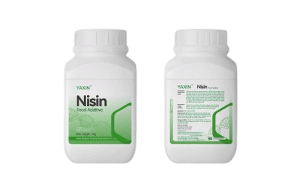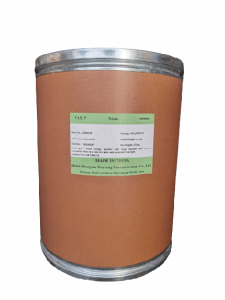
 CONTACT
CONTACT
- Linkman:Linda Yao
- Tel: +8618231198596
- Email:linda.yao@dcpharma.cn
- Linkman:CHARLES.WANG
- Department:Overseas
- Tel: 0086 0311-85537378 0086 0311-85539701
Factors Influencing the Effect of Natamycin Use
TIME:2025-02-26The usage effect of natamycin lactose preparations can be affected by various factors, which are as follows:
I. Factors of the Preparation Itself
Natamycin Content: As the main active ingredient, the content of natamycin in the preparation directly affects its effect. If the content is too low, it cannot effectively exert its antibacterial and other functions. On the other hand, if the content is too high, it may lead to waste and even potentially cause side effects or adverse impacts.
Lactose Quality: Lactose, as a carrier or excipient, plays a crucial role in terms of quality. Lactose from different sources, with varying purities and crystal forms, may affect the physical properties and stability of the preparation. For example, an uneven particle size distribution of lactose may lead to differences in the dissolution or release of natamycin in the preparation, thereby influencing its effect.
Preparation Process: The production process of the preparation, such as the mixing method, drying conditions, and molding process, has a significant impact on its usage effect. Taking spray drying and freeze drying as examples, different drying methods will result in different microstructures and porosities of the preparation, which in turn affect the release rate and bioavailability of natamycin.
II. Usage Environment Factors
Temperature: The influence of temperature on natamycin lactose preparations is relatively complex. During the storage process, excessively high temperatures may cause the components in the preparation to degrade and deteriorate, reducing the activity of natamycin. In the usage environment, temperature will affect the dissolution rate of the preparation and the growth environment of microorganisms. For instance, in a high-temperature environment, the reproduction rate of microorganisms accelerates, which may exceed the inhibitory ability of natamycin.
Humidity: A high-humidity environment may cause the preparation to absorb moisture, leading to caking and mildew, which will affect the stability and usage effect of the preparation. Moreover, humidity also affects the survival and growth conditions of microorganisms. In a humid environment, microorganisms are more likely to breed, increasing the difficulty of natamycin's action.
pH Value: The pH value can change the existing form and activity of natamycin. Under different pH conditions, the solubility and antibacterial activity of natamycin may vary. For example, in an acidic environment, its antibacterial effect may be enhanced, while in an alkaline environment, the effect may be weakened.
III. Factors of the Object of Use
Microorganism Type: Different types of microorganisms have different sensitivities to natamycin. Some molds and yeasts are relatively sensitive to natamycin, while certain bacteria may have a certain degree of resistance to it. Therefore, the usage effect of natamycin lactose preparations will vary depending on the different situations of microbial contamination.
Microorganism Quantity: If the number of microorganisms in the environment to be treated is too large, exceeding the effective action range of the natamycin lactose preparation, it may not be possible to completely inhibit or kill the microorganisms, resulting in poor usage effects.
Application Site: When used on the human body, the physiological environment and microbial communities of different application sites are different, which will affect the effect of the preparation. For example, when applied to the skin surface, factors such as sebum secretion and the thickness of the stratum corneum of the skin will affect the penetration and action effect of the preparation. When used in the gastrointestinal tract, the peristaltic speed of the gastrointestinal tract and the secretion of digestive juices will also have an impact on the action of the preparation.
IV. Factors of the Usage Method
Dosage: Insufficient dosage cannot achieve the expected antibacterial and other effects. On the contrary, excessive dosage may not only fail to enhance the effect but also increase the cost, and may even cause adverse reactions or unnecessary impacts on the environment.
Usage Frequency: If the usage frequency is too low, it cannot continuously inhibit the growth of microorganisms. If the usage frequency is too high, it may lead to waste and may also cause microorganisms to develop adaptability.
Contact Time: The natamycin lactose preparation needs to have sufficient contact time with the object of action to fully exert its effect. For example, in food preservation, if the contact time between the preparation and the food is too short, it may not be able to effectively inhibit the microorganisms on the surface of the food.
- Tel:+8618231198596
- Whatsapp:18231198596
- Chat With Skype







